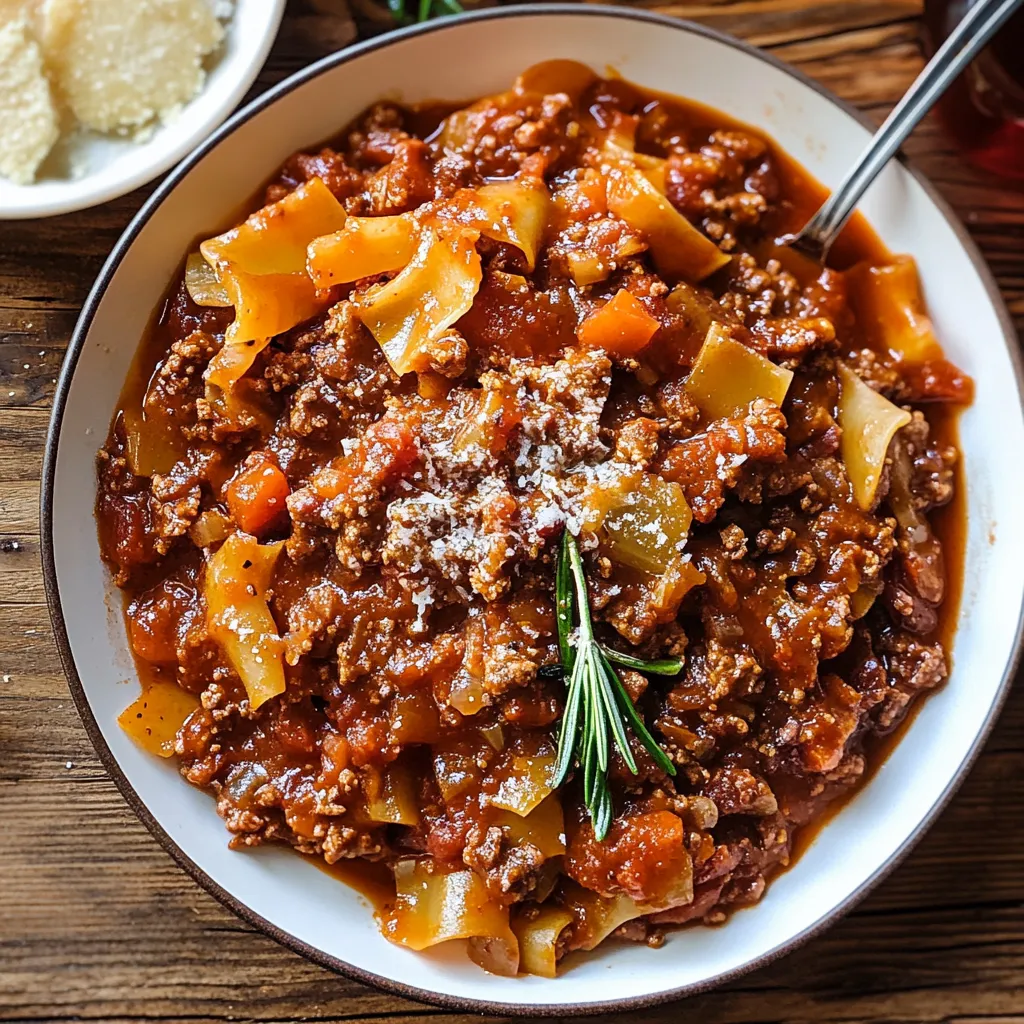 Save it
Save it
This genuine Tuscan Ragu turns basic ingredients into a deep, flavorful sauce that brings real Italian home cooking to your table. Balancing meats, veggies, and herbs just right, this timeless sauce makes food that's both snug and fancy.
After many years tweaking this old-world recipe, I've found that taking your time is what creates those layered, rich flavors that make a proper Italian ragu stand out.
Key Ingredients Breakdown
- Ground beef: Go with 80/20 fat content for tastiest results
- Italian sausage: The better quality, the tastier your sauce
- Soffritto vegetables: Cut them evenly and use only fresh ones
- Red wine: Pick something you'd happily drink
- Tomato passata: Try to grab San Marzano ones
- Fresh rosemary: Gives that true Tuscan touch
- Quality olive oil: Don't skip on extra virgin here
Thorough Cooking Instructions
- Soffritto Preparation:
- Cut veggies the same size. Warm oil slowly. Soften everything gently. Skip browning the veggies. This sets up your flavor base.
- Meat Browning:
- Crumble meat into tiny chunks. Work in smaller amounts if needed. Create tasty bits on pan bottom. Keep going till meat isn't pink anymore. Add salt throughout.
- Wine Integration:
- Pour wine into the hot mixture. Loosen stuck bits with spoon. Let it cook down halfway. Wait for boozy smell to fade. Keep it barely bubbling.
- Sauce Building:
- Mix in tomatoes bit by bit. Blend paste all the way through. Add salt bit by bit. Watch how thick it gets. Give it a stir now and then.
- Final Simmering:
- Use very gentle heat. Look in once in a while. Make it thicker or thinner as needed. Taste and fix seasoning. Let everything come together.
 Save it
Save it
I learned this recipe while cooking alongside a sweet Italian grandma in Tuscany who taught me how taking your time makes all the difference in sauce.
Smart Heat Control
After making tons of batches, I now know that keeping a soft simmer is super important. Too hot and your sauce burns, too cool and flavors don't mix right. I keep the heat just enough to see tiny bubbles pop up once in a while, changing it as needed while cooking.
Keeping It Fresh
This sauce actually tastes even better after sitting in the fridge overnight as the flavors blend more. I usually cook extra, putting portions in containers to freeze. When stored properly, it stays yummy for up to six months.
Ways To Enjoy It
Though normally paired with pappardelle pasta, this sauce works with lots of things. I really like it with rigatoni since the sauce sticks in the grooves, or over smooth polenta if you don't eat gluten. Sprinkle fresh Parmigiano-Reggiano and a little good olive oil on top to finish it perfectly.
Make It Your Own
I've played around with different twists over time. Throwing pancetta into the soffritto makes it even richer, while adding a bit of heavy cream at the end makes a smoother sauce. For fancy dinners, I sometimes toss in some wild mushrooms.
Drink Matches
The same red wine you cook with makes a great drink alongside. I really enjoy this sauce with a glass of Chianti Classico or Sangiovese, which go well with the hearty flavors without being too strong.
Best Tools For The Job
A thick-bottomed Dutch oven works great for this sauce, spreading heat evenly and stopping burning. The tight lid helps keep moisture just right during the long cooking time.
 Save it
Save it
This Tuscan Ragu has become my favorite for everyday family meals and when friends come over. Good ingredients and slow cooking create something really special that feels like you're sitting in the Italian countryside. Every time I make it, I remember that some dishes are totally worth the extra time.
FAQ sur la recette
- → What’s the best wine to use?
- Pick a dry wine you'd happily drink. Traditional picks are Chianti or Sangiovese, but any good option works.
- → Can this sauce be made early?
- Totally! It actually tastes better after resting a day or two. Pop it in the fridge for up to 4 days.
- → Why include both meats?
- The duo gives a balanced flavor—beef brings richness, while sausage adds seasoning and a bit of fat.
- → Is this freezer-friendly?
- Absolutely. Freeze it in an airtight container for up to 3 months, and reheat when needed.
- → Which pasta works best?
- Wide-cut pasta like pappardelle or tagliatelle grabs onto the sauce perfectly.
